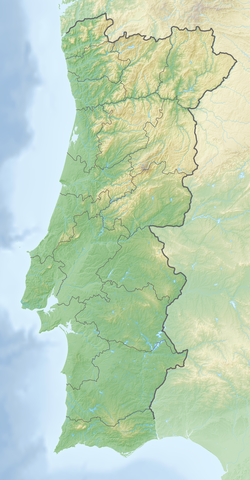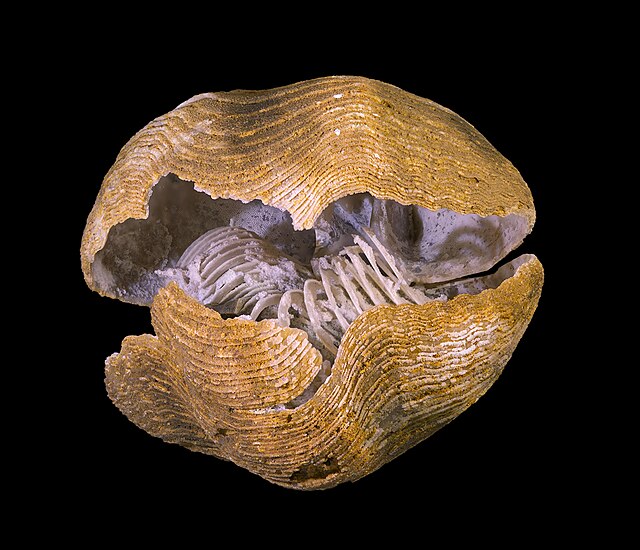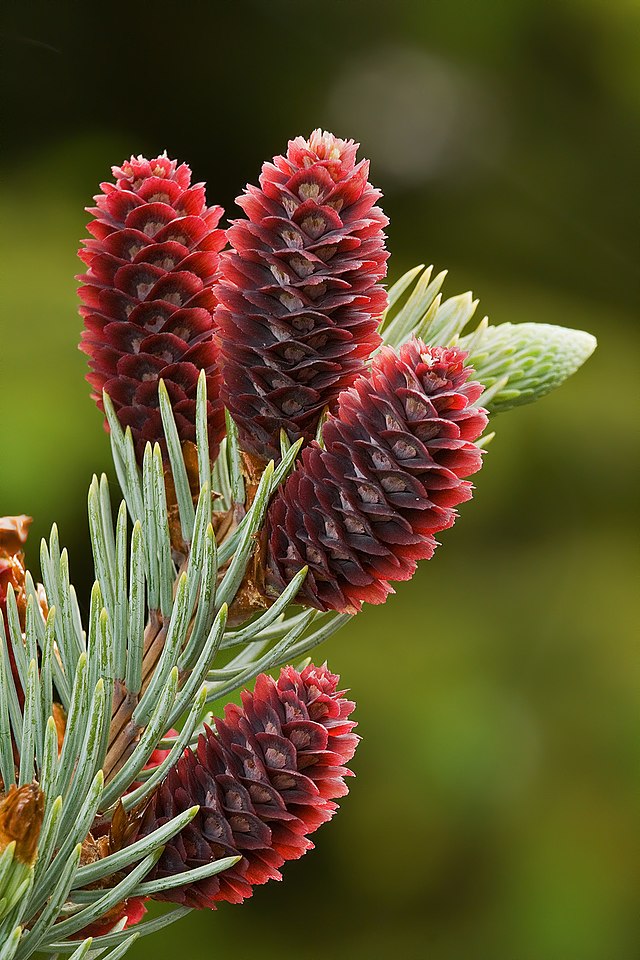Top Qs
Timeline
Chat
Perspective
Coimbra Group (geology)
Geological formation in Portugal From Wikipedia, the free encyclopedia
Remove ads
The Coimbra Group (Also known as Camadas de Coimbra or Calcários de S. Miguel) is a geological group of Sinemurian-Pliensbachian (Lower Jurassic) age in the Lusitanian Basin of Portugal.[1] The unit is made of the Coimbra & the Água de Madeiros Fms, that represent a series of peritidal to intertidal facies of a Carbonate platform mostly of Obtusum-Ibex age, that gradually evolve to open marine/hemipelagic units Vale das Fontes Formation and Lemede formation.[2][3] This unit is known for its fossil content, including Invertertebrate and vertebrate ichnofossils and fossils.[4][5] The group wasn´t named until 2014.[6]
Remove ads
Description
Summarize
Perspective
A) Map of Jurassic Sedimens in the Lusitanian Basin, along documented localities where ichthyosaur fossils have been uncovered (locations along the coast are Early Jurassic) B) Geological map of the W Iberian Peninsula, with closeup of outcropping rock units, synthetic stratigraphic column of the Lower Jurassic of São Pedro de Moel and panoramic views of the outcrops and units of the Água de Madeiros Formation in Praia de Água de Madeiros
The Coimbra Formation, has a diverse lithological composition, characterized by the predominance of carbonates and a varied stratigraphic succession. The unit has a wide distribution within the Lusitanian Basin, with an approximate thickness of 60±20 m in the Coimbra-Penela region.[7]
The lithology of the Coimbra Formation is marked by alternating massive pelites and dolomites, which vary in purity and sedimentary structure. The dolomites come in different forms, including crystalline, micritic, oolitic and bioclastic varieties, and are often interlayered with marly pelites and ferruginous dolomites. In addition, calco-dolomitic breccias and dolomitic sandstones occur, often biodetrital, reflecting complex sedimentary dynamics.
The formation can be subdivided into two main members: the Vila Seca Member and the Casa do Sal Member. The Vila Seca Member is characterized by a succession of dolomitic sandstones interspersed with impure dolomicrites and calco-dolomitic breccias. There are also strata of pelites and marly claystones, showing a variety of depositional processes, including evaporitic conditions and episodes of bioturbation. At the top of this member, there are discontinuity surfaces with signs of micropaleocarsification and temporary subaerial exposure.[7] The Casa do Sal Member is distinguished by the occurrence of massive microcrystalline dolomites interspersed with laminated black pelites. The lithology suggests more stable depositional conditions, with alternating low-energy carbonate environments and episodes of more siliciclastic sedimentation. The transition between the two members is marked by an important stratigraphic discontinuity.[7]
The stratigraphy of the Coimbra Formation is complex due to the interdigitation with lithological units of the Pereiros Formation. The lower contact is characterized by a gradational transition from sandstones and claystones to fossiliferous chalcodolomites, while the upper limit is defined by a clear lithological change to supercurrent calcareous-marginal units. The formation shows processes of dolomitization penecontemporaneous to deposition and later phases of dedolomitization, conditioned by local tectonic structures.[7]
Faciological analysis allowed the unit to be subdivided into six main lithic groups (U1-U6), identified on the basis of field stratigraphy and lateral variation of the lithofacies. This differentiation reveals a sedimentary evolution controlled by paleogeographic and diagenetic conditions, reflecting a succession of depositional environments from shallow marine to restricted evaporitic environments.[7]
The Água de Madeiros Formation is stratigraphically positioned above the Coimbra Formation and is divided into two members: Polvoeira Member (lower section) & Praia da Pedra Lisa Member (upper section).[8]
The Polvoeira Member, particularly around São Pedro de Moel, consists of alternating layers of marls and marly limestones that progressively become richer in clay. A notable feature of this section is the presence of organic-rich black shales, which suggest deposition in a low-energy, oxygen-poor marine setting under a warm, arid climate.[9] These conditions favored the preservation of organic material, making these layers of interest for hydrocarbon research.[10] The Polvoeira Member represents a period of increasing clay deposition and organic accumulation, suggesting more restricted and anoxic conditions in the Lusitanian Basin during the Early Jurassic. The diversity of marine fossils provides valuable insights into ecological changes and the evolution of benthic communities in this transitional paleoenvironment.[8]
Above this unit, the Praia da Pedra Lisa Member represents a more carbonate-dominated interval, best observed at Água de Madeiros. This member begins with approximately 9 meters of thinly bedded mudstones and wackestones, often laminated and enriched in microfossils. Larger marine organisms are less common in this section, though ammonites and trace fossils are present.[8] Towards the top, the deposits show an increasing influence of marl, with dark grey marly intervals becoming more frequent alongside thickening limestone beds. Some of these marls contain a high concentration of organic matter, suggesting conditions that may have been periodically low in oxygen.[8]
Remove ads
Paleoenvironment
Summarize
Perspective

The sediments in the Coimbra Formation represent the shallow sections of an inner carbonate platform, adjacent to the Paleozoic basement in the E.[9] They are rich in organic matter and are found alongside marl layers in a shallow marine setting. The organic material is divided into three groups (A, B, and C), showing how it is spread across different layers.[1] The middle section mainly consists of group B, with a lot of microbial mat particles and very few plant particles. This layer has the highest level of Total organic carbon (TOC), indicating it was deposited in a restricted and stagnant area with little water movement.[11] In the upper section, all three groups (A, B, and C) are present. The lower part of this section contains more plant debris and fewer marine particles, suggesting a stronger influence from land and more oxygen in the environment, leading to lower TOC levels.[9] As we move up, group B shows a reduced land influence. At the top, group A takes over, with more marine particles and fewer plant materials, suggesting a transition to a more open marine environment. Overall is made up of shallow marine deposits formed in a low-energy setting, with occasional stronger events like storms or floods.[12] The area was a calm, shallow marine environment with limited water flow. Most sediments were fine-grained, showing low-energy conditions and a semi-arid climate. Microbialites formed during periods of slow sediment buildup, indicating low water movement. Occasional storms brought better oxygenated water, supporting brief marine life bursts. Fossils suggest shifts between restricted and open marine environments due to minor sea-level changes. Over time, open-marine conditions increased, with more typical marine fossils reflecting a significant rise in sea level.[12] Individual Stromatolite mounds are clearly defined, either as separate structures lined up next to each other or as irregular, flat to wavy layers that merge at the base.[12] Palynology includes Classopollis (Cheirolepidiaceae Conifer) and Botryococcus as the dominant continental components, while marine palynomorphs include the genera Tasmanites and Cymathiosphaera (Prasinophyte algae) as well Zygnemataceae.[9] The recent discovery of Dinosaur tracks revelated the presence of supratidal environments located in a shallow, tropical coastal area, likely near the shore.[4]
The Água de Madeiros Formation represents a marine deepening trend during the Early Jurassic. The Polvoeira Member begins with a shallow, well-oxygenated environment, rich in benthic life, but transitions to deeper waters with increasing clay content and nektonic fossils, indicating a shift towards lower oxygen conditions.[10] Periodic black shale layers suggest episodes of restricted circulation and organic accumulation.[10] The Praia da Pedra Lisa Member reflects a more offshore, deeper setting, with scarce benthic fauna and an abundance of ostracods, radiolarians, and nektonic species like ammonites.[10] The presence of laminated, organic-rich marls indicates fluctuating oxygen levels and reduced water movement. Overall, this formation records a progressive sea-level rise in the Lusitanian Basin, transitioning from a carbonate shelf to a deeper, clay-influenced marine environment.[9]
Remove ads
Fossil Content
Summarize
Perspective
Color key
|
Notes Uncertain or tentative taxa are in small text; |
Mollusca
Crustacea
Brachiopoda
Actinopterygii
Ichthyosauria
Plesiosauria
Archosauria
In February 2025 it was announced the discovery of Dinosaur remains within Água de Madeiros beach, excavated in 2024, extracted in a block weighing around 1200 kilos.[25]
Plantae
Fossil wood including large logs with abundant Phytoclast material are common in the Água de Madeiros Formation.[27]
Remove ads
See also
- Blue Lias, England
- Charmouth Mudstone Formation, England
- Zagaje Formation, Poland
- Drzewica Formation, Poland
- Ciechocinek Formation, Poland
- Borucice Formation, Poland
- Rotzo Formation, Italy
- Saltrio Formation, Italy
- Moltrasio Formation, Italy
- Marne di Monte Serrone, Italy
- Calcare di Sogno, Italy
- Podpeč Limestone, Slovenia
- El Pedregal Formation, Spain
- Aganane Formation, Morocco
- Tafraout Group, Morocco
- Azilal Formation, Morocco
- Budoš Limestone, Montenegro
- Kota Formation, India
- Cañadón Asfalto Formation, Argentina
- Los Molles Formation, Argentina
- Kandreho Formation, Madagascar
- Elliot Formation, South Africa
- Clarens Formation, South Africa
- Evergreen Formation, Australia
- Cattamarra Coal Measures, Australia
- Hanson Formation, Antarctica
- Mawson Formation, Antarctica
Remove ads
References
Wikiwand - on
Seamless Wikipedia browsing. On steroids.
Remove ads




















